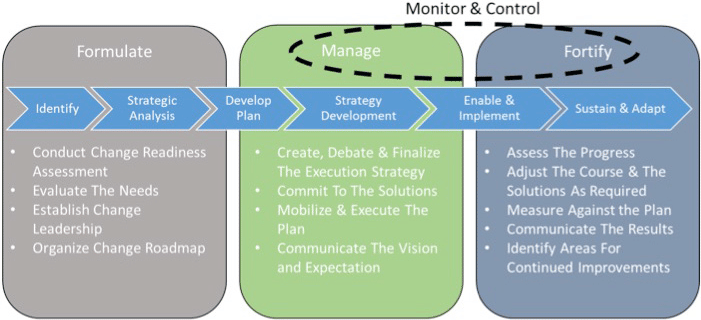As SDI continues its path toward steady growth, change will be a common factor in our transition to a world class organization. The key to this will be the adoption of successful change management philosophies.
As we look towards the future we must remember that change is a process lead most effectively by the workforce of an organization. Employees should be empowered to take pride, leadership and involvement in the success of the change. Staff members should empower their teams to think outside the box and challenge themselves on organizational efficiencies. To make change sustainable, all members of the organization need to have a voice and the organization must be able to listen without bias. Read more about gaining compliance from personnel when it comes to change management.
As SDI looks to build upon Six Sigma and Project Management structure, it will need the entire organization working as a unified team that will effect change.
Understanding Change Management:
Sustainable change comes from three key change cycles: Formulating, Managing and Fortifying.
Formulate — The process of identifying the need for change, the high level requirements & strategic vision and the agents of the change.
Manage — The process of challenging the change, creating the execution strategy and mobilizing the plan of action.
Fortify — The process of assessing the progress of the change and its effectiveness. And creating the structure for sustainment, adoption and continues improvement.
As change management is often executed in projects and programs there is a unique process flow that enables a project management life cycle for each change initiative. Each initiative includes key project management principles such as risk assessments, monitor & controlling processes, developing project plans and documenting lessons learned. Project management, along with other business management models play a role in succeeding change, but are not the only contributing factors. The change cycles as detailed are the tools that frame the road map to change management and each area must be fulfilled to properly create a winning approach.
The transformation of an organization must be baseline on solid footing. The aspect related to formulating the strategy provides that footing by creating a concrete plan of action. Formulating also is dependent on the development of a strategic vision that captures the essence of the change in a manner that excites and motivates the workforce, to execute the plan of action and overcome the hurdles.
Along with a clear vision and strategy, the effective management of the transformation will be vital to ensure the vision is properly and effectively deployed. Key to this management aspect is challenging the change to confirm it meets the rigors of the obstacles it is intended to face. Once confidence in the change can be affirmed, managing the execution and mobilization of the agents of change will be crucial. Most change management failures can be traced back to the change cycles of formulating and managing. Mainly those aspects related to lack of vison, planning and proper management.

No change can endure if it is not fortified. Fortifying usually beings during the advancement of the plan of action, which is during the progress monitoring phase and it is when change effectiveness has been initially captured. Fortifying factors that are successful early on in the change management cycle solidify the strategic vision, contributes in overcoming hurdles, and ensures sustainment and adoption for future change. Sustainment and adoption are fortifying aspects that must go hand in hand. Change cannot be successful if it is not sustain by the organization, similarly adoption must be accepted and driven by the workforce for the change to hold long term effect.
Although change management may seem linear in its processes, it is cyclical in nature, as continues improvements will effect more changes in the organizations. Change management in an organization is unavoidable as the organization’s survival is depend greatly in its ability to keep up with new business challenges, ever changing technology and adaptation to market conditions. Just imagine all the change cycle in various organization in the last 50 years going from phone to fax, fax to email and email to the cloud. All these changes have caused organizations to adapt by formulating, managing and fortifying the changes to their organization. All member of an organization must be acutely aware of change management and should embrace its impact if the organization is to survive and thrive.
To learn more about successful change management, Contact Us today!


